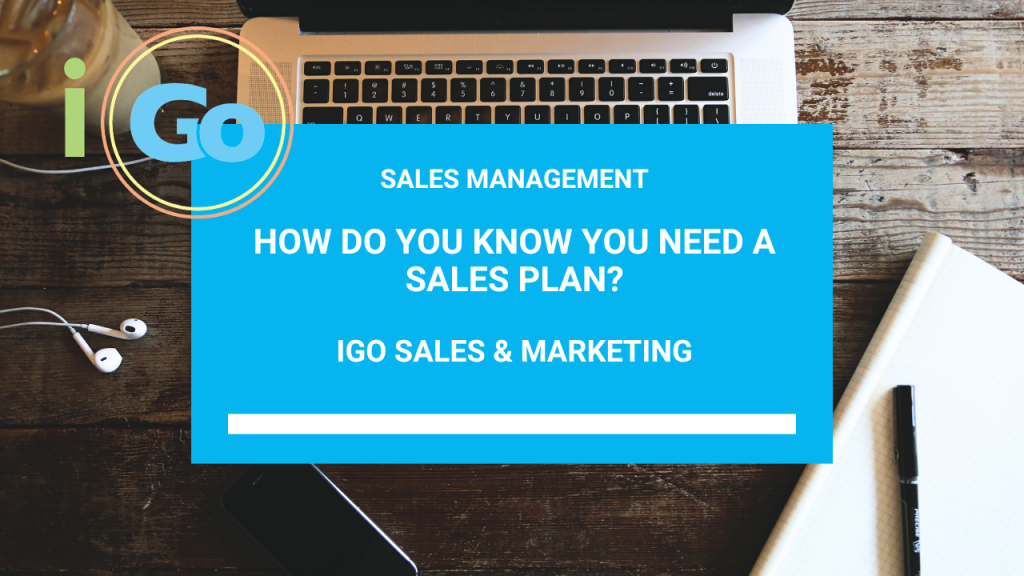The “Sell! Sell! Sell!” Plan That Went Nowhere
Years ago, when I was a young marketing manager, my boss told me a story about his son — freshly promoted to Sales Manager, and about the same age as me — who had just been tasked with presenting a sales plan at the company’s annual meeting.
He put in the work, created the slides, and stood up in front of the room to deliver his big presentation.
It didn’t go well.
When asked to explain his sales strategy, his answer was:
“We’re going to sell! Sell! SELL!”
No structure. No accountability. No plan.
As you can imagine, it was a short presentation.
That story stuck with me. At the time, I was responsible for marketing plans — detailed, measurable, strategic plans with timelines, budgets, and KPIs. When it came time later in my career to build a sales plan, I didn’t want to suffer the same fate.
That’s when I leaned on my operations planning background — using structured thinking, measurable objectives, and CRM accountability to create sales plans that actually work.
So, if your sales plan sounds more like “sell! Sell! SELL!” than a structured strategy… or if you recognize any of these signs below, it might be time to take a closer look.
Five Signs You Need a Sales Plan
1. Sales Depends Entirely on Inbound Leads
If your team’s idea of prospecting is “waiting for the phone to ring,” you’ve got a problem.
Inbound leads are great — but they’re unpredictable.
A strong sales plan includes defined outreach: knowing who you want to sell to (industry, size, role) and having a process to reach them.
Updating your website won’t fix an input problem — it’s a volume issue, not a messaging one.
2. The Pipeline Looks Full, But Deals Don’t Move
A “busy” pipeline can hide a lot of inefficiency. Reps pad it with low-quality deals so it looks full, but everything stalls in “quote follow-up.”
This usually means your opportunity definition is too loose.
A bloated Sales Funnel means your opportunity definition is too loose!
A CRM can help measure this:
- Average time between quote and close
- Opportunities with no activity in 30+ days
- Unresolved quotations, delivered, but not marked closed or lost.
If that number keeps climbing, your team’s feeding the funnel with fluff. Tighten your criteria — fewer, higher-quality deals lead to better forecasts and less wasted effort.
3. Forecasting Feels Like Guesswork
If every forecast meeting feels like a game of “pick a number,” it’s not leadership — it’s a process gap.
Good forecasting relies on consistent definitions, clear stages, and trustworthy data.
A good forcast is an intersection of good data, a plan and accountability.
Without them, you’re just hoping.
4. Sales and Marketing Are Out of Sync
Marketing is generating leads the sales team ignores. Sales is chasing accounts marketing isn’t supporting.
It’s not anyone’s fault — it’s a lack of a shared plan.
A proper sales plan aligns both teams around common markets, consistent messaging, and shared accountability.
5. Your Sales Manager Is Doing Everyone Else’s Job
When your Sales Manager is editing website copy, building email templates, or writing social posts, or worse, they’re assigned their own book of accounts!
They’re not managing sales.
That’s not laziness — it’s drift. Without a plan, roles blur and everyone fills the gaps reactively.
CRM: Turning the Plan Into Action
A written plan is great — but accountability comes from tracking it.
Your CRM brings the plan to life by:
- Assigning and tracking sales activities
- Measuring conversion ratios and deal velocity
- Providing dashboards to monitor performance
- Highlighting bottlenecks before they derail results
When properly set up, CRM isn’t just a database — it’s a measurement tool for your strategy.
Conclusion: Replace “Sell! Sell! Sell!” With Strategy
That story about “Sell! Sell! Sell!” still makes me smile — mostly because I’ve seen versions of it repeated in countless companies since.
If your sales plan sounds like a pep talk instead of a strategy, or if you recognize any of the signs above, I can help.
At iGo Sales and Marketing, we help business owners build real sales plans — backed by CRM data, structured accountability, and measurable goals.
